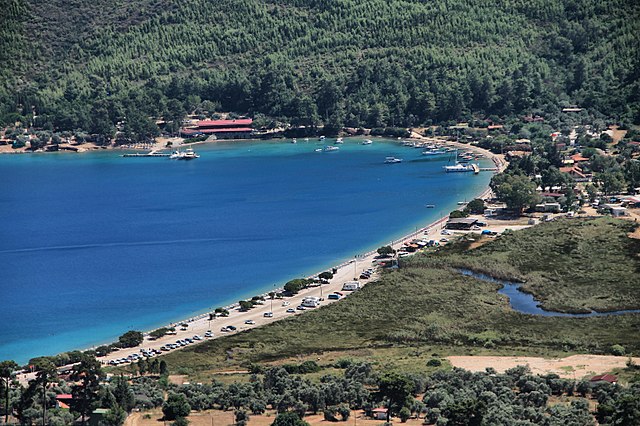Laodicea on the Lycus was a rich ancient city in Asia Minor, now Turkey, on the river Lycus (Çürüksu). It was located in the Hellenistic regions of Caria and Lydia, which later became the Roman Province of Phrygia Pacatiana. It is now near the modern city of Denizli.
Colonnaded street in Laodicea
Bronze roman medal (45 mm, 45.6 g) showing Caracalla’s portrait and the emperor being greeted by city’s citizens in the Agora during his visit to Laodicea ad Lycum (216/217 AD), in front of a two-columned temple with soldiers lined up on both sides.
Side of West Agora
Western Theatre after restoration in 2021
Caria was a region of western Anatolia extending along the coast from mid-Ionia (Mycale) south to Lycia and east to Phrygia. The Carians were described by Herodotus as being Anatolian mainlanders and they called themselves Caria because of the name of their king. He reports the Carians themselves maintained that they were Anatolian mainlanders intensely engaged in seafaring and were akin to the Mysians and the Lydians. The Carians spoke Carian, a native Anatolian language closely related to Luwian. Also closely associated with the Carians were the Leleges, which could be an earlier name for Carians.
Theater in Caunos
The Mausoleum at Halicarnassus, one of the Seven wonders of the ancient world, was built by Greek architects for the local Achaemenid satrap of Caria, Mausolus (Scale model)
Relief of an Amazonomachy from the Mausoleum at Halicarnassus.
The coast of Milas.








